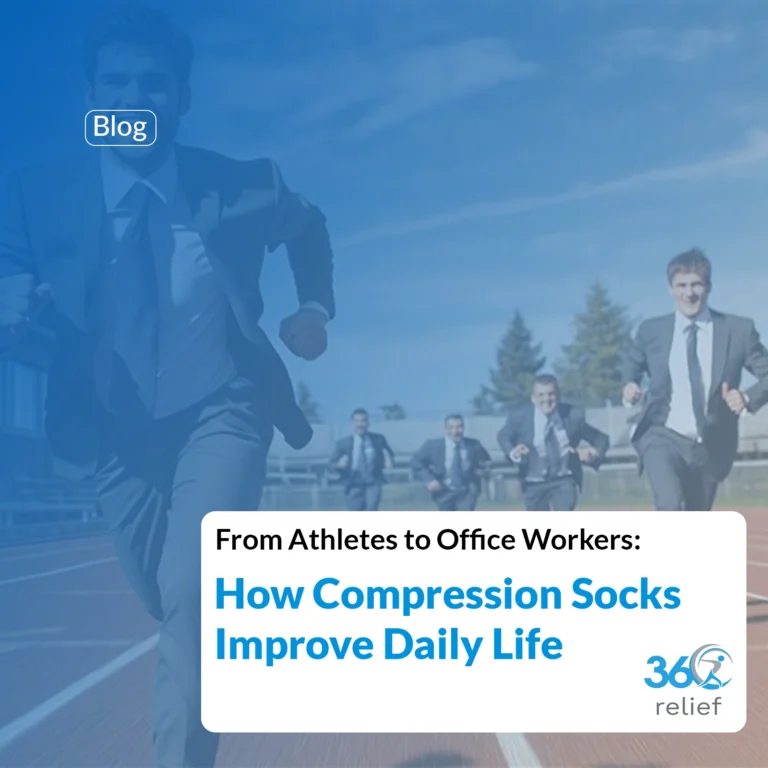
Train Hard, Recover Smarter: Why Supportive Products Are Key for 2025 World Boxing Championships Success
The World Boxing Championships 2025 are just around the corner, with Liverpool preparing to host some of the finest athletes

DVT Awareness Month 2023: Overview
March is marked as the awareness month for DVT. This is an initiative of public health aimed to raise awareness about this commonly occurring medical condition. According to the report revealed by The American Heart Association, up to two million people in America are affected by DVT monthly. More commonly the condition is known as blood clotting.
It has also been revealed that 74% of Americans have very little or no awareness of DVT. This is the reason that American Public Health Association aims to raise awareness about DVT. The main purpose of this initiative is to make people aware of the causes and risk factors of DVT. This helps people to manage the symptoms and prevent the chances of DVT.
The condition, Deep Vein Thrombosis, DVT occurs due to blood clot formation in the vein deep inside your body. The condition usually affects the large veins in the thigh and lower legs. However, the condition may also occur in other deep veins located in the arms and pelvis.
Continue reading this article to know the possible facts of DVT. For example, this article is a detailed account of the common causes and symptoms of DVT. The article is concluded with the treatment plans and preventive measures to manage DVT.
Table of Contents
ToggleBeing inactive for a prolonged time during travelling or occupational activities may become the reason for a blood clot in the lower legs. However, people with the following conditions may also be more prone to developing deep vein thrombosis:
In some cases, people experience no symptoms of DVT. However, in general, the basic symptom of DVT is a pain in your legs. However, based on your conditions or the intensity of the disease, you may also experience the following symptoms:
In general, DVT affects one leg. The pain in your legs or veins may be worse when you bend your foot upward towards the knees.
During the DVT awareness month, healthcare professionals advise you not to ignore if you feel pain and any other symptoms mentioned above. However, you must also consult your GP immediately.
At the initial stage, your GP or healthcare professional will perform a physical check-up to diagnose the causes of DVT. However, to diagnose the problem more deeply they may perform vascular tests to confirm venous thrombosis. The vascular tests may include the following:
The following are other blood tests your GP will suggest if you will have an increased risk of blood clotting. These blood tests may include;
The condition of deep vein thrombosis may be managed by surgical or non-surgical processes. Your GP will recommend or follow the treatment plan based on your condition or results of diagnosing tests:
The following are the most effective non-surgical treatment plans to reduce mild to moderate symptoms of DVT:

Your doctor may also recommend surgical thrombectomy if you are having a very large blood clot. On the other hand, surgery may also be recommended if a blood clot causes severe tissue injury.
If you feel minor symptoms of DVT or are susceptible to developing DVT, you must adopt some preventive measures, suggested by experts. As well as this, you must also alter your lifestyle to prevent the chances of DVT. Here we come with the most effective preventative measures, suggested by experts, to help control the risks of DVT:


The World Boxing Championships 2025 are just around the corner, with Liverpool preparing to host some of the finest athletes

Getting enough sleep is one of the most important foundations of good health, yet many people in the UK struggle

1. Introduction – Rugby’s Biggest Stage Returns to England From August to September 2025, England will host the most exciting

Modern workplaces often involve long hours at a desk, whether in an office or working from home. While sitting may

Mums are the true multitaskers of everyday life. From school runs to supermarket trips, from cleaning to working on your

Every year, thousands of people across the UK embrace Cycle To Work Day as an opportunity to swap four wheels

When it comes to safeguarding our knees, whether for running, lifting, rehab or daily movement, choosing the right support can

Whether you’re an athlete striving for peak performance, a healthcare professional spending long hours on your feet, or an office

Holidays are coming, which means that let’s welcome them with joy, laughter, and, of course, some comfort! At 360 Relief,

Happy Cyber Monday to everyone; it is a perfect occasion for 360 Relief to offer a special discount of 10%

This Black Friday, take advantage of exclusive 10% savings on some of 360 Relief’s best-selling compression socks and support braces!

Everyday life includes walking up stairs, but knee discomfort can make this basic activity difficult. Walking up or down stairs

Cooking is a beloved activity for many, but for those struggling with knee pain, standing in the kitchen can quickly

We’ve all been there. On a ride in a car, for instance, to the country home for a weekend break

Gardening is enjoyable for many people and those who like tending to their lawns and plants usually find it therapeutic

